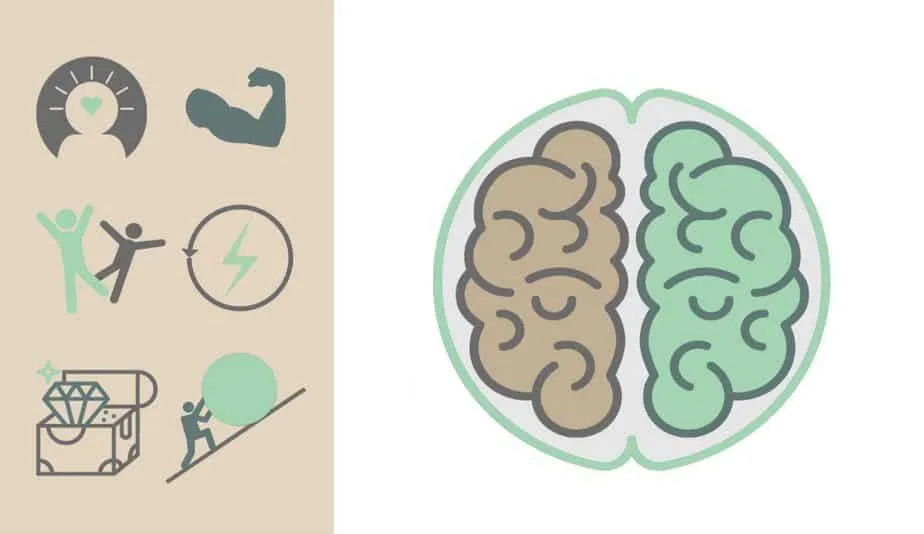In recent years, mindfulness has shifted from being a niche meditation practice to a mainstream approach for improving mental well-being. From reducing stress to enhancing focus, mindfulness has become a powerful tool for mental clarity and emotional regulation. One of the most fascinating aspects of mindfulness is its ability to change the brain itself—a concept known as neuroplasticity.
This article explores the connection between mindfulness and brain plasticity, explaining how consistent awareness practices can reshape neural pathways, improve cognitive function, and foster lasting emotional resilience.
Table of contents
- Understanding Mindfulness
- What Is Brain Plasticity?
- How Mindfulness Changes the Brain
- Mindfulness Practices That Boost Brain Plasticity
- Evidence from Neuroscience
- Practical Benefits of Mindfulness-Induced Neuroplasticity
- Tips for Cultivating Mindfulness Consistently
- Mindfulness and Lifelong Brain Health
- Conclusion: Mindfulness as a Brain-Reshaping Tool
Understanding Mindfulness
Mindfulness is the practice of intentionally paying attention to the present moment without judgment. It involves observing thoughts, emotions, and sensations as they arise, rather than getting caught up in them. Mindfulness can take many forms, including meditation, mindful breathing, body scans, and mindful movement practices like yoga or tai chi.
Core Elements of Mindfulness:
- Awareness: Observing thoughts, emotions, and bodily sensations.
- Non-Judgment: Accepting experiences without labeling them as “good” or “bad.”
- Presence: Focusing on the current moment rather than ruminating on the past or worrying about the future.
The beauty of mindfulness lies in its simplicity and accessibility. Even brief daily practices can have measurable effects on the brain.
What Is Brain Plasticity?
Neuroplasticity, or brain plasticity, is the brain’s remarkable ability to reorganize itself by forming new neural connections throughout life. Contrary to old beliefs that the brain was fixed after early childhood, modern neuroscience shows that our brains continue to adapt in response to experience, learning, and environment.

Key Concepts of Neuroplasticity:
- Structural Plasticity: Physical changes in the brain’s structure, such as increased gray matter density.
- Functional Plasticity: Shifts in how brain regions communicate and function together.
- Synaptogenesis: Formation of new synapses, or connections between neurons.
- Neurogenesis: Growth of new neurons, particularly in areas like the hippocampus, which is crucial for learning and memory.
Mindfulness taps into this adaptability, helping reshape neural networks associated with attention, emotion regulation, and self-awareness.
How Mindfulness Changes the Brain
Research over the past two decades has revealed that mindfulness practices can induce both structural and functional changes in the brain.
1. Enhancing the Prefrontal Cortex
The prefrontal cortex is the brain’s command center, responsible for executive functions such as decision-making, planning, focus, and emotional regulation. Mindfulness strengthens this region by:
- Increasing gray matter density, which supports cognitive processing.
- Enhancing connectivity with the amygdala, reducing emotional reactivity.
- Improving attention span and working memory.
Impact: People who practice mindfulness consistently often report better concentration, emotional balance, and mental clarity.
2. Regulating the Amygdala
The amygdala plays a central role in processing emotions, particularly fear and stress responses. Mindfulness has been shown to:
- Reduce the size and activity of the amygdala.
- Lower stress hormone (cortisol) levels.
- Enhance resilience to anxiety and negative emotional triggers.
Impact: With a calmer amygdala, individuals can respond to stress more thoughtfully rather than reacting impulsively.
3. Increasing Gray Matter in the Hippocampus
The hippocampus is crucial for learning, memory, and emotional regulation. Mindfulness can:
- Increase hippocampal volume and density.
- Improve memory retention and cognitive flexibility.
- Support emotional processing and empathy.
Impact: A well-functioning hippocampus contributes to better problem-solving, memory recall, and emotional stability.
4. Strengthening the Insula
The insula helps us connect with bodily sensations and emotional experiences. Mindfulness:
- Enhances awareness of internal states, such as hunger, heartbeat, or tension.
- Improves interoception (the ability to sense bodily signals).
- Supports self-regulation and emotional insight.
Impact: Individuals become more attuned to their bodies and emotions, leading to healthier decision-making and stress management.
5. Reducing Default Mode Network Activity
The default mode network (DMN) is a brain network active during mind-wandering, self-referential thinking, and rumination. Overactivity of the DMN is linked to anxiety, depression, and distraction. Mindfulness practice:
- Reduces DMN activity, fostering present-moment awareness.
- Strengthens connectivity between the DMN and executive control areas.
Impact: Decreased rumination and improved focus allow for clearer thinking and emotional balance.
Mindfulness Practices That Boost Brain Plasticity
While any consistent mindfulness practice can enhance neuroplasticity, certain approaches are particularly effective:

1. Mindful Breathing
Focusing on the breath anchors attention in the present moment and activates parasympathetic nervous system responses, promoting calmness.
Practice Tip: Spend 5–10 minutes noticing each inhale and exhale, gently redirecting attention when the mind wanders.
2. Body Scan Meditation
This involves systematically paying attention to sensations throughout the body, fostering mind-body connection.
Practice Tip: Lie down or sit comfortably and mentally scan from head to toe, observing tension, temperature, and texture without judgment.
3. Mindful Walking
Walking with awareness of each step, the sensations in the feet, and the surrounding environment strengthens focus and presence.
Practice Tip: Walk slowly, noticing each footfall, the rhythm of your breath, and environmental details.
4. Loving-Kindness Meditation (Metta)
This practice cultivates compassion for oneself and others, enhancing social and emotional brain circuits.
Practice Tip: Silently repeat phrases like “May I be happy, may I be healthy,” then extend them to loved ones and eventually all beings.
5. Mindful Eating
Eating with awareness of taste, texture, and sensation improves digestion, satisfaction, and awareness of hunger cues.
Practice Tip: Eat slowly, chew thoroughly, and observe each bite, noticing flavors and textures without distraction.
Evidence from Neuroscience
Multiple studies support the link between mindfulness and brain plasticity:
- A 2011 study using MRI scans showed that participants who completed an 8-week mindfulness-based stress reduction (MBSR) program had increased gray matter density in the hippocampus and areas associated with self-awareness.
- Research at Harvard University found that long-term meditators had thicker prefrontal cortices and enhanced connectivity in attention networks.
- Studies on the amygdala indicate that mindfulness reduces stress reactivity and lowers cortisol, promoting resilience to anxiety.
These findings highlight that the brain is highly adaptable and that mindfulness can facilitate structural and functional improvements across multiple regions.
Practical Benefits of Mindfulness-Induced Neuroplasticity
The changes in brain structure and function resulting from mindfulness practice translate into tangible benefits:
- Improved Focus and Attention: Stronger prefrontal cortex connectivity leads to better concentration and reduced distractibility.
- Reduced Stress and Anxiety: Amygdala regulation decreases overreactions to stressful stimuli.
- Enhanced Memory and Learning: Hippocampal growth supports cognitive flexibility and retention of information.
- Better Emotional Regulation: Awareness of thoughts and feelings promotes balanced emotional responses.
- Greater Resilience: Strengthened neural circuits enable adaptive responses to challenges.
Tips for Cultivating Mindfulness Consistently
To maximize the impact of mindfulness on brain plasticity, consistency is key. Here’s how to get started:
- Start Small: Begin with 5–10 minutes daily and gradually increase.
- Create a Routine: Meditate at the same time each day to build a habit.
- Use Guided Practices: Apps or online recordings can help beginners maintain focus.
- Be Patient: Neural changes take time; persistence is more important than duration.
- Integrate Mindfulness Into Daily Life: Mindful walking, eating, or showering can reinforce presence outside formal meditation.
Mindfulness and Lifelong Brain Health
The concept of brain plasticity emphasizes that we are never too old to change or improve our minds. Mindfulness offers a pathway to preserve cognitive function, reduce age-related decline, and enhance emotional well-being throughout life. Even older adults can experience improvements in attention, memory, and mood by engaging in regular mindfulness practices.
Conclusion: Mindfulness as a Brain-Reshaping Tool
Mindfulness is more than a relaxation technique; it is a brain-training practice that reshapes neural pathways, enhances cognitive and emotional function, and builds resilience. By intentionally practicing awareness and presence, we can literally change the structure and function of our brains—a testament to the incredible adaptability of the human mind.
In a world full of distractions and stressors, mindfulness provides a scientifically backed method to cultivate calm, focus, and emotional balance. As research continues to uncover the profound effects of mindfulness on brain plasticity, one thing is clear: investing time in mindful practice is an investment in your brain’s health, your emotional well-being, and your overall quality of life.
Key Takeaways:
- Mindfulness improves attention, emotional regulation, and cognitive function.
- Neuroplasticity allows the brain to reorganize itself based on experience and practice.
- Mindfulness strengthens the prefrontal cortex, hippocampus, and insula while regulating the amygdala and default mode network.
- Consistent practice, even for short daily sessions, promotes long-term brain health and resilience.
- Mindfulness can be integrated into everyday activities like walking, eating, or breathing exercises.
